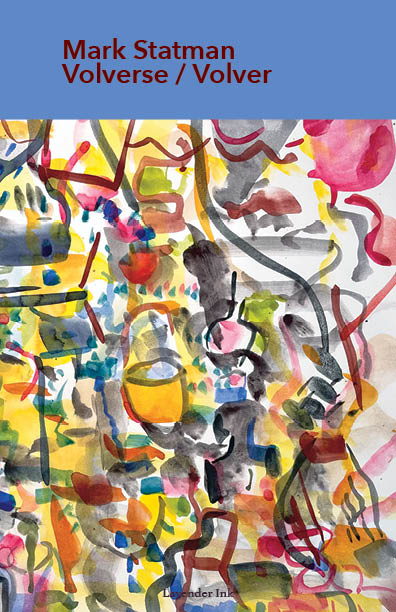
Part 2 MARK STATMAN: MEXICO AND THE POETRY OF GRIEF AND CELEBRATION
Part 2 of my interview with Mark Statman looks closely at Mark’s Latin American poetic influences, his life in Mexico and ends with an extract
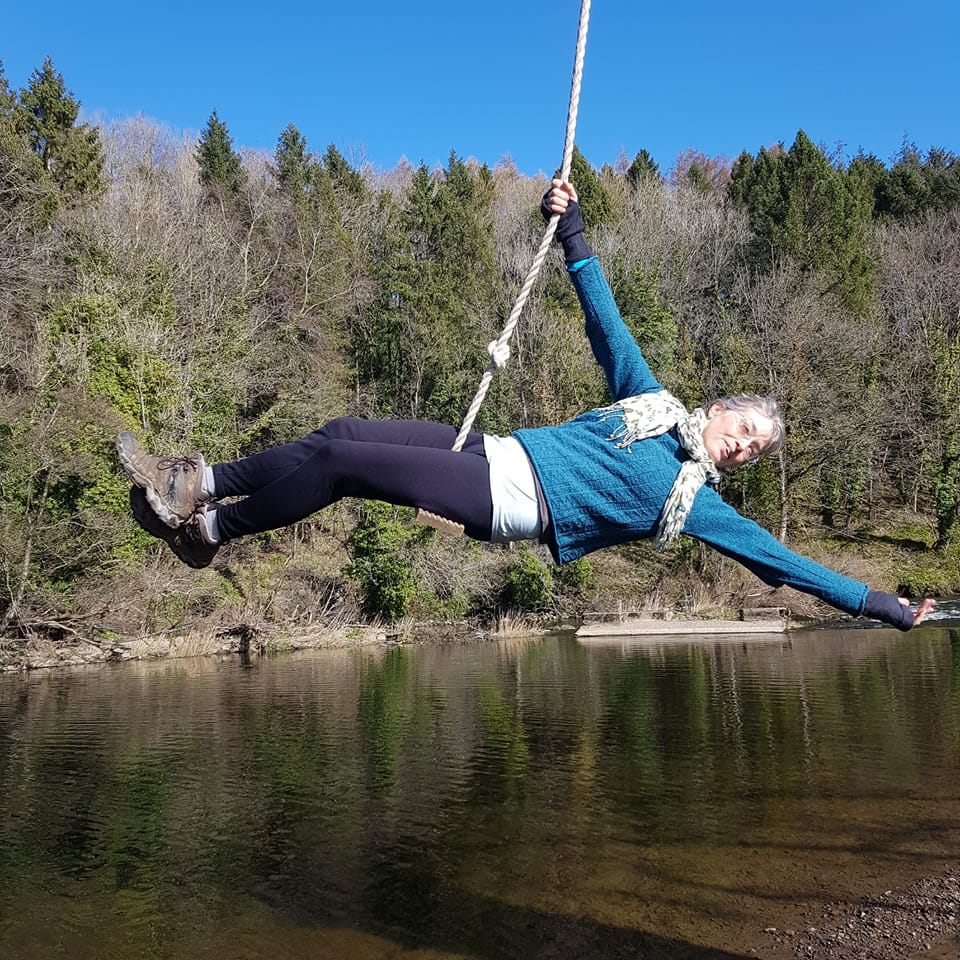
I interviewed Rose Lennard about her ephemeral art and her deep connection with nature. Rose is an environmentalist, climate activist, poet, dancer and gardener who cares passionately about our relationship with the natural world.
Leslie: Tell us about your ephemeral art in nature.
Rose: I stumbled across the world of ephemeral art when I got the idea of doing an installation of children’s shoes arranged in sinuous rootlike lines around a veteran beech tree in an ancient woodland near my home, as part of an action by our local Extinction Rebellion (XR) group. The little empty shoes told a very poignant story of children’s lives which are already being lost to climate change around the world, and those which will be lost in the future. They also spoke of the need for children to play in nature, because that is how they develop a love of nature, and unless we love something, we won’t be motivated to protect it. There were other layers of storytelling – roots being symbolic of connections, with our community, with nature; how roots are part of the incredible underground world of fungal networks and microscopic lifeforms, which sustains life and is capable of sequestering vast amounts of carbon when in a healthy and thriving state. By centring around the amazing 600-year-old beech tree, the installation also drew attention to the vulnerability in this country of our beech trees, which being thin-barked and shallow-rooted, will be particularly affected by climate change bringing increasing droughts and high winds.

The installation was very moving to create, and was also a good way to engage with passers-by, being non-threatening but thought-provoking. I have often passed by this tree, but after spending hours with it, creating this beautiful artwork which honoured the tree, once we had packed up and were leaving, I turned back to look at it and felt a visceral jolt as if the tree was acknowledging me. There’s no way to prove or disprove this, but the idea that we can form a relationship with a tree, a woodland, or any other aspect of nature is one that I find very inspiring and nourishing. Many of us will have hugged trees, but maybe we should try slowing down to the timescale of a tree, so that it has a chance to notice us. If a tree lives 5 to 10, even 15 times longer than we do, it stands to reason that a 5 or 10 second hug would seem so fleeting to a tree that it wouldn’t even notice. Try 10 times longer than a human hug!
I had long been aware of the work of famous land artist Andy Goldsworthy, and loved his creations; however what he created seemed unattainable unless you have special skills, and often strength and endurance. Yet making something beautiful in the woods using only a few bags of children’s shoes, gave me confidence that there was a way to get creative in nature that was accessible to anyone, which was also very enjoyable and rewarding, and which could communicate with others. Around this time, the Coronavirus pandemic set in, and the nation went into lockdown. Normal patterns of life were on hold, and I, like so many other people, turned increasingly to nature for solace and peace of mind. I took long solitary walks, with plenty of time to stop and reflect, look, listen, take photos.
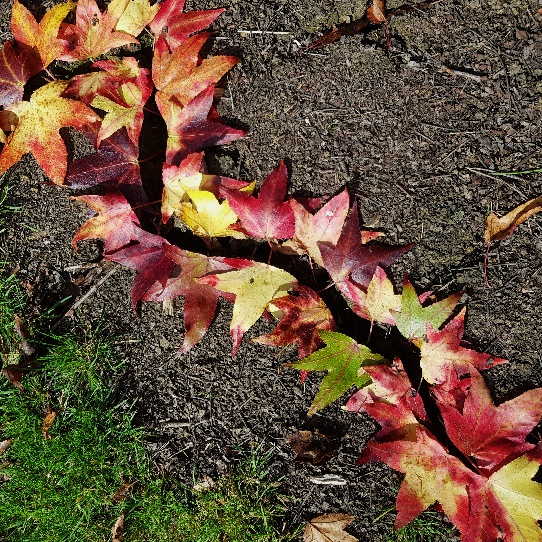
I didn’t know there was a movement called Ephemeral Art, but at one point I just started picking up sticks, stones and leaves and putting them into some sort of shapes and patterns. For me, it was something that helped me to be in the moment, really present in my surroundings. It was fun, and relaxing, at a time when life felt stressful and worrying. Later, wondering what to call this activity (‘fiddling about with stuff in the woods’ was suggested by one friend!) I was told about Ephemeral Art. This form of sculpture was pioneered by British artist, photographer and environmentalist Andy Goldsworthy. Ephemeral Art is made with natural materials that are at hand. The artist constructs the sculpture anonymously, and then walks away to leave the piece to be discovered. Part of the appeal of Ephemeral Art is that the viewer accidentally stumbles upon the art, and is left to wonder who made it, and why.
I love the fact that the pieces are temporary – it removes much of the pressure to produce something ‘of value’ and puts the emphasis on the process of making. I make something, maybe take some photos, and then either disassemble it if I want to use the materials in another format, or leave it, in which case the first gust of wind may take it apart, or an animal may walk over it and disturb the arrangement, or fallen leaves may cover it. It feels liberating and carefree – like the profligacy of a tree shedding its leaves in Autumn.
In its way, this work is quietly radical, as it is the antithesis of the consumer society, and encourages a sense of sufficiency, which counteracts the endless wanting more which is fed by advertising and popular culture.
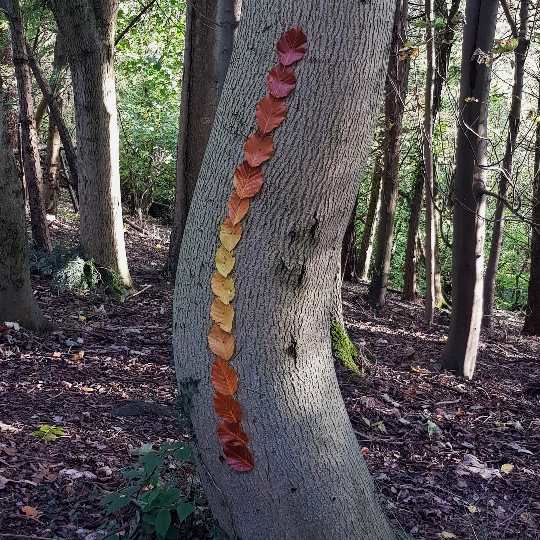
Doing this work (I use the term loosely – it’s really play, not work) has been a learning process. Sometimes I will head out with a feeling of anxiety, and I realise this is because I am getting attached to the idea of there being an end product, and worrying that I won’t come up with anything worthwhile. I find the best response is to just notice this, and not to try to do lots of planning or preparation, but simply relax and trust that whatever happens will be fine. If I can simply immerse myself in the process then I am able to experience being in a state of ‘flow’ – something that comes through art or physical activity, when there is a balance held between the challenges and the skill level. Where challenges feel higher than your skills, anxiety and stress may be experienced, whereas boredom or apathy can result from an activity which does not present enough challenge. In a flow state, the preoccupations of the mind fall away and you are fully present in the moment. This has been much researched. The beauty of the ephemeral art for me is that there is no fixed outcome, and therefore my skills are always sufficient – I simply do what I have the ability to do. The level of challenge is likewise always just right, because I can choose what I take on. If something is too hard, I try something easier; if I feel I want to try something trickier, I have a go.
For anyone wanting to try this for themselves, it couldn’t be easier. Start by taking a moment to quieten your mind and tune into your surroundings, paying attention to all the senses. Look at what you can find around, whether leaves, sticks, stones, berries, ferns, seed pods, feathers, even litter – I usually just use materials which are on the ground, or so numerous that plucking a few leaves, for example, won’t be missed. These can be combined in any way: have fun experimenting! Try arranging in lines, spirals, stars to start – or more organic abstract forms. You can stack, fold, break, wrap, balance, weave, twist – I’ve seen kids use crab apples to join sticks, or dead leaves suspended in invisible cobwebs – the only limit is your imagination, and if you give it free rein you will probably discover you are more imaginative than you realised!
Leslie: I believe there’s a big idea behind your interest in ephemeral art. Could you put it into a wider historical context, please?
Rose: Certainly. To my way of thinking, it’s about how we began as a species, how we’ve changed, and the problems that has generated.
Human beings evolved in close and intimate contact with the natural world. We depended on it for our survival, and in order to find food and water, and protect ourselves from danger, we had to be alert to all kinds of details in our surroundings – the colour of berries, a rustle in the undergrowth, the shape of clouds. Our brains and our nervous systems have evolved to notice and respond to a wealth of complex stimuli perceived and filtered by all of our senses, all the time.
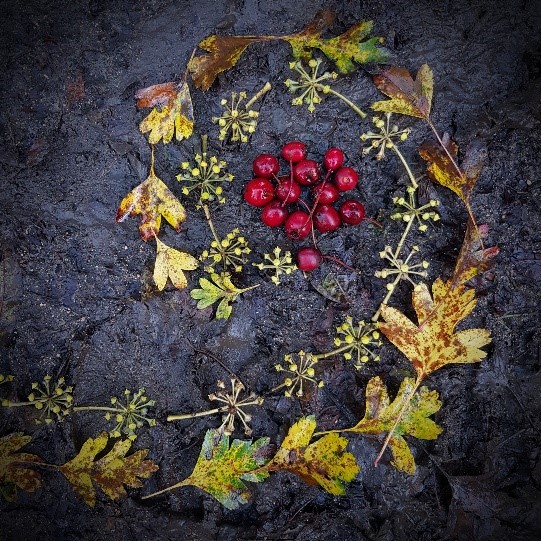
In our modern existence, we are surrounded by environments which are simpler, smoother and blander than those we co-evolved with: tarmac, concrete, painted walls, shiny metal, squares, straight lines, curves designed for the standard turning circles of cars. Even in rural areas, arable fields contain the same single crop grown in monotonous straight lines and bounded by tightly clipped hedges, and the wildlife that used to throng our countryside is now reduced to a whisper of its former abundance.
We can still find landscapes which are richer: ancient woodlands, wildflower meadows, braided rivers – often just precious fragments. We go to these places for renewal, to unwind. Whether consciously or subconsciously, at some level we know that we are nourished by such settings. It is my belief that we have a deep need for complexity and richness, that we are sensually starved through being deprived of natural diversity. Maybe this is why we are so susceptible to advertising which offers us endless new stuff – there is a void which we can’t even name which we are trying to fill. We are lonely – not just because we mostly live in societies where the ties of community and kinship have largely broken down, but because we have also lost our connection with thriving and abundant nature. Lonely, and homesick – there is a beautiful Welsh word, hiraeth, which loosely means deep longing for something, especially one’s home. Unspoilt nature is our true home, and we have been cast out.
Increasingly, these few scraps of nature are under pressure from those of us able to get out for walks, dog walks, runs, mountain biking. We fly around the world to go to places that are ‘unspoilt’, maybe knowing in the back of our minds that doing so is incompatible with the peace and renewal that we are searching for. Companies cash in on our need for nature and sell us supposedly indispensible kit for our adventures, guided tours, off-road cars that penetrate deeper into the heart of the countryside. Time in nature becomes a packaged commodity.
Capitalist society depends on the population agreeing to be both consumers and producers, and we are deeply conditioned to feel that our self-worth depends on how well we fit into these roles. Time in nature has to be squeezed into the small gaps between fulfilling these roles, and even when we are outside, we measure our walks with sophisticated gadgets, often striving to go faster and further, and post our achievements on Facebook and Instagram, feeling validated by external approval measured in ‘likes’. Little wonder that we often feel that something is missing in our lives.
Next week Rose Lennard talks about her climate activism, poetry, dance, gardening and featuring on a podcast,
ABOUT LESLIE TATE’S BOOKS:

Part 2 of my interview with Mark Statman looks closely at Mark’s Latin American poetic influences, his life in Mexico and ends with an extract
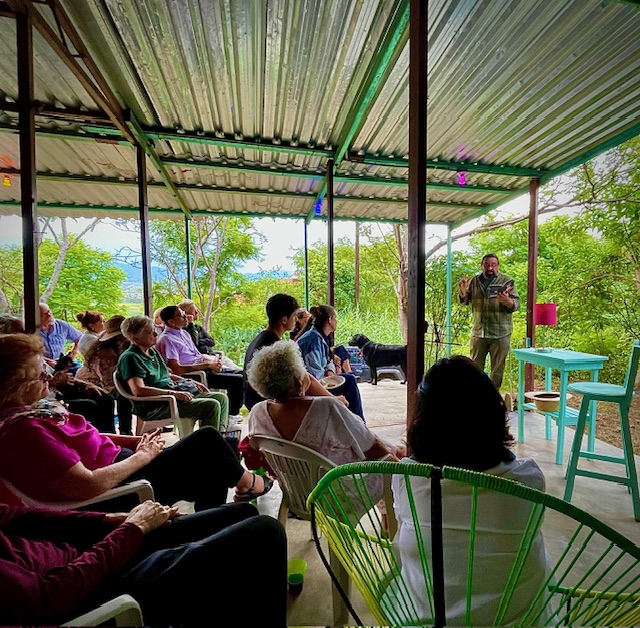
I interviewed international poet and translator Mark Statman about Volverse/Volver, his 14th published collection. Mark, who has won national arts awards, is Emeritus Professor of Literary

I interviewed Lisa Dart, finalist in the Grolier, Aesthetica and Troubadour Poetry Prizes and author of The Linguistics of Light (poems, Salt, 2008), Fathom (prose
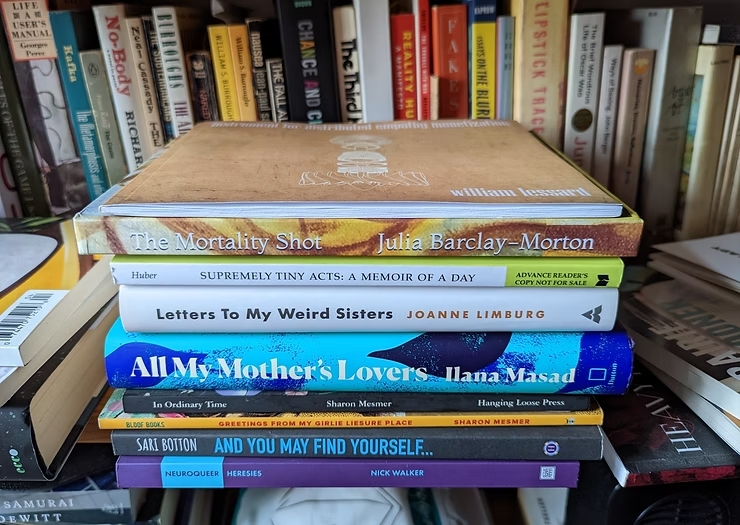
I interviewed writer Julia Lee Barclay-Morton about her experience of autism. Julia began as an experimental dramatist in New York, moving to the UK to

I interviewed Gillean McDougall from Glasgow, who edited the collaborative projects Honest Error (on Charles Rennie Mackintosh and his wife Margaret Macdonald) and Writing the
| Cookie | Duration | Description |
|---|---|---|
| cookielawinfo-checkbox-analytics | 11 months | This cookie is set by GDPR Cookie Consent plugin. The cookie is used to store the user consent for the cookies in the category "Analytics". |
| cookielawinfo-checkbox-functional | 11 months | The cookie is set by GDPR cookie consent to record the user consent for the cookies in the category "Functional". |
| cookielawinfo-checkbox-necessary | 11 months | This cookie is set by GDPR Cookie Consent plugin. The cookies is used to store the user consent for the cookies in the category "Necessary". |
| cookielawinfo-checkbox-others | 11 months | This cookie is set by GDPR Cookie Consent plugin. The cookie is used to store the user consent for the cookies in the category "Other. |
| cookielawinfo-checkbox-performance | 11 months | This cookie is set by GDPR Cookie Consent plugin. The cookie is used to store the user consent for the cookies in the category "Performance". |
| viewed_cookie_policy | 11 months | The cookie is set by the GDPR Cookie Consent plugin and is used to store whether or not user has consented to the use of cookies. It does not store any personal data. |
2 responses
HI Leslie, It is lovely to meet Rose and learn about this form of art. I am very devoted to creating awareness about the Sixth Mass Extinction that is taking place and climate change. Rose’s comment “unless we love something, we won’t be motivated to protect it” is very true and it is one of the reasons I wrote my most recent poetry collection. A great conversation, thank you.
🙂 🙂 🙂